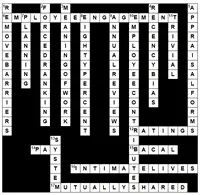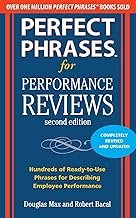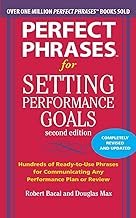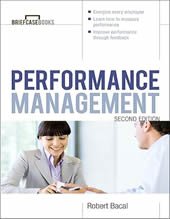Hooper-Bacal Performance Management: The Benefits
One conclusion I've drawn from the research and working with organizations on improving performance management is that ALL stakeholders -- manager, employee and the company need, not only to benefit, but to perceive that they benefit from any process that is used.
Otherwise, the process gets sabotaged, ignored, or short-cutted, which is exactly what happens in 95% of performance management systems used today. If you want a single reason why reviews and managing performance fail, it's because managers and employees simply don't see the process as valuable for THEM.
So, what are the benefits of a system that works?
Benefits Of An Effective Performance Management System For Employees
- Within the Hooper-Bacal Method, it's essential that employees not only communicate about their performance when manager's take the initiative, but also take the initiative themselves. The system opens the doors for employees to feel that talking about their performance isn't going to get them punished, particularly when the expose themselves by admitting problems or barriers to achievement.
- Employees know where they stand at all times. Because the system is 90% based on continuous communication, and not just at the end of the year, and because most of the communication is informal, employees know what's up.
- Employees know what they are to accomplish, since they negotiate their tasks and "goals", but even more importantly they know WHY they need to do their jobs well -- how their jobs fit in with everyone elses. This has a profound impact on employee engagement.
- Employees understand what job tasks are most important, and which ones least important. This is a common problem, particularly when employees need to choose what to work on. By including priorities for tasks in the performance worksheets, employees are less confused about what's important, and what's not, and make less priority related errors.
- Employees no longer feel that performance reviews are "done" to them by the manager, since the process of both goal setting and reviews is negotiated.
- Review anxiety is lessened. Because the "annual performance review" is the least important component of the system, and because there will never be "surprises" in the review, the tension created by appraisals is reduced. Not to zero, perhaps, but close to it.
- More management help WHEN NEEDED. One of the manager's roles in the system is to help identify and REMOVE barriers to performance. A lot of times, performance is impeded, not by the employee, but by the system, lack of tools, or other factors that the manager can help with. Now, employees can more safely go to managers to put forth what might be needed for the work to be done more effectively.
Benefits For Managers And Supervisors
- Always know what is going on. Nothing is worse for managers than being asked by their bosses, how something is going, when, in fact, they don't know. The system is based on continuous informal communication, where responsibility for communication is shared between employee and manager, so there's no reason for managers not to know how something is working, and so they can respond to questions when asked.
- Lessens need to micromanage And prevents problems. A central purpose of the Hooper-Bacal method is to prevent performance problems, not just fix them after the fact. By providing clear goals/outcomes to employees, providing context, and priorities, employees make better decisions, and need not consult managers on every little decision. In effect the system create more self-directed and empowered staff in a real meaningful way, and that means huge savings in managerial time. No need to micromanage.
- Reduced Wasted Time On Performance Review Paperwork. Most review forms are useless for improving performance, and create a lot of trivial disagreements, for example, on whether a rating should be a 3 or a 4. In addition, it's rare for completed forms to be even read, once they are completed, as they migrate to HR, never to be seen again. It's a waste. The actual "performance discussion meeting", the formal one, could be completed in about fifteen minutes. And, it's still valuable.
Company Benefits
The issue is simple. In any organization, every process should add value to the organization. It should bring the company closer to achieving its goals. Hooper-Bacal does that.
Aligns goals and purposes throughout the organization. Since employee goals and job tasks are cascaded down from overall organization to division to specific work unit, it allows alignment from top to bottom. That means aiming the organization, and aiming the work units. You get more coordination, and more productivity.
Cuts overhead time. One of the problems with traditional methods is they eat into time that should be used more productively. There's the time spend by managers. The time spent by employees. Then the time spent in processing the usually useless forms if they are kept with HR. For systems relying on software, there's software costs. Hooper-Bacal is inexpensive in both time and money. The simplicity, and informality of much of the process drastically reduces resources needed to support the performance management system.
Agility and dealing with constant change. Traditional systems don't do well with changing circumstances because they are so inflexible. In Hooper-Bacal, goals are fluid as needed, and priorities can be changed easily. This reflects the reality of our current workplace, and helps manage the chaos. Retasking employees is easy.
Conclusion
In some ways Hooper-Bacal is simply a reflection of our new workplace. Tradtional systems, stuck in a workplace world that was predictable, stable, and authority based don't work. There are other benefits of managing performance well, but you'll notice that the our list of benefits has many more listed for employees, than for anyone else. The reason is that any effective performance management approach needs to have employees see the value in the process and engage in it openly, and without anxiety, because they see the benefits. When you do that, all stakeholders win.
Back to main Hooper-Bacal Index




